The automotive world is buzzing about electric vehicles, but let’s not overlook the impressive strides made in hybrid technology. For those not quite ready to plug in, or who appreciate the reliability of gasoline, Small Hybrid Suvs offer a compelling blend of fuel efficiency and practicality. These vehicles, often referred to as compact hybrid SUVs or crossovers, utilize sophisticated gas-electric systems that recuperate energy during deceleration and braking, maximizing fuel savings, especially in city driving.
While not zero-emission like EVs, these hybrids represent a significant step towards greener driving, particularly for urban dwellers without easy access to overnight charging. The technology, pioneered 25 years ago with models like the Toyota Prius and Honda Insight, has matured significantly, offering enhanced transmissions and intelligent computer controls. This new generation of small hybrid SUVs and crossovers provides an excellent entry point into vehicle electrification without the charging commitment. Let’s explore some of the top contenders in the 2025 model year.
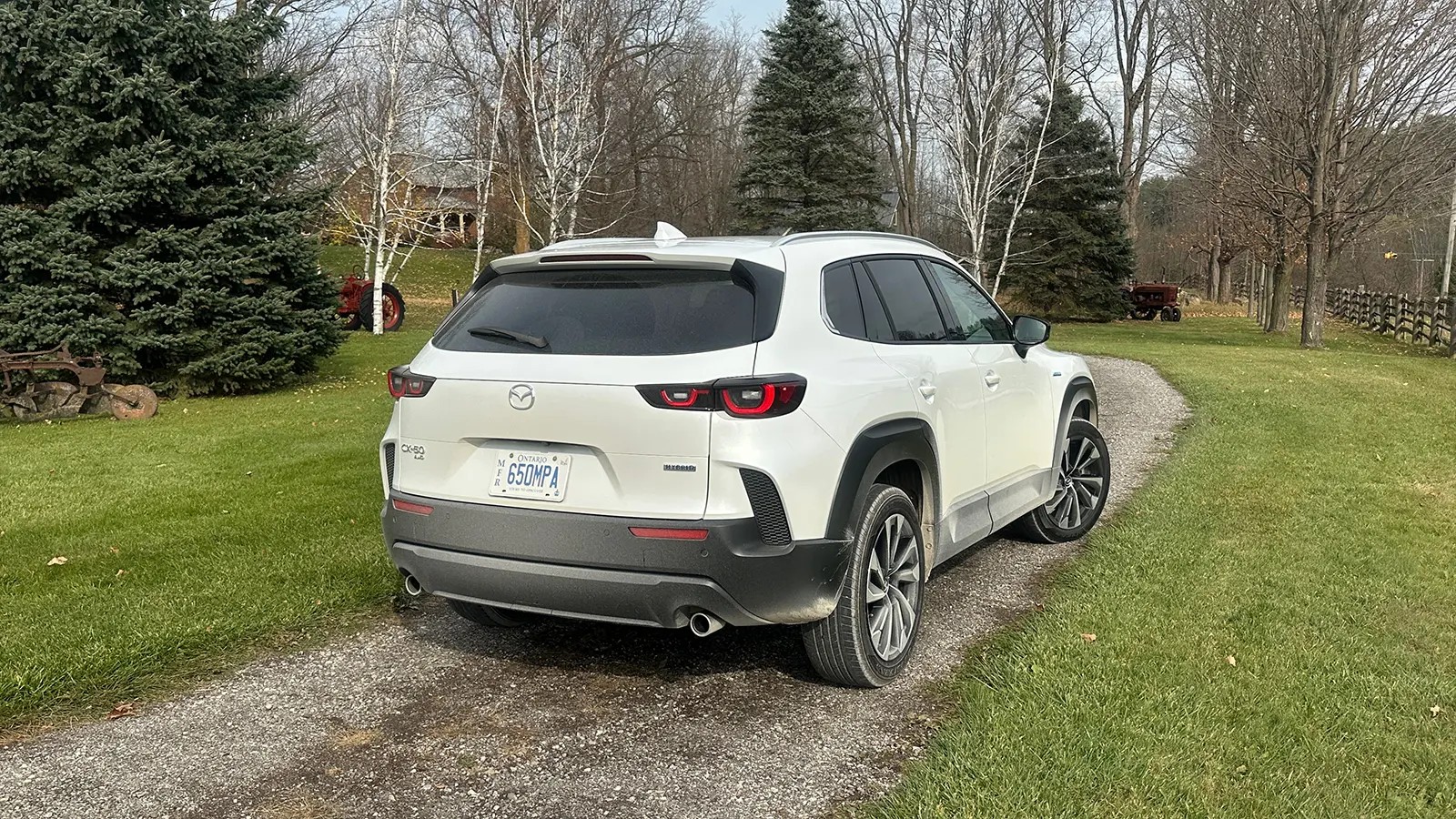 Mazda CX-50 in white exterior
Mazda CX-50 in white exterior
Mazda CX-50 Hybrid: Efficiency Meets Refined Design
Mazda has injected a dose of hybrid efficiency into its rugged-looking CX-50 crossover with the all-new CX-50 Hybrid for 2025. While the standard CX-50 already offered a more adventurous aesthetic compared to the CX-5, the hybrid variant introduces Toyota’s highly-regarded gas-electric powertrain beneath its distinctive sheet metal. Sharing its core hybrid technology with the Toyota RAV4 Hybrid, the CX-50 Hybrid boasts 219 horsepower and 163 lb-ft of torque from a 2.5-liter inline-four engine. This power is managed through a continuously variable transmission (CVT) and distributed by three electric motors, providing standard electric all-wheel drive.
Performance-wise, the CX-50 Hybrid prioritizes fuel economy over outright speed. It offers more horsepower but less torque than the base gasoline CX-50, and significantly less than the turbocharged version. This contrasts with competitors like the Hyundai Tucson Hybrid, which provides a sportier N-Line option. The focus here is clearly on efficiency.
The Mazda CX-50 Hybrid achieves an EPA-estimated 38 mpg combined, a slight step down from the RAV4 Hybrid’s 39 mpg. Integrating Toyota’s Hybrid System (THS) into the Mazda platform required considerable engineering, resulting in subtle styling adjustments beyond hybrid badging. The signature CX-50 body cladding is extended, and the roof is raised slightly to maintain a 7.6-inch ground clearance, even with the battery pack positioned under the rear seats. While the CX-50 Hybrid is longer than many rivals in the small hybrid SUV segment, its cargo space is slightly reduced to 29.2 cubic feet compared to the standard CX-50’s 31.4 cubic feet. It also offers less cargo room than the RAV4 and Tucson Hybrids, which both boast 38.7 cubic feet.
However, the CX-50 Hybrid truly excels in interior refinement. Mazda has cultivated a subtly upscale ambiance, particularly in higher trim levels, which are laden with luxury features. Stepping into the Premium Plus trim, the tester vehicle, reveals two-tone leather seats with meticulously camel-colored stitching, echoed throughout the black-accented doors and dashboard.
All CX-50 models include a rotary controller in the center console, a feature often associated with luxury brands. This minimizes fingerprints on the touchscreen and complements the user-friendly steering wheel controls. Convenient buttons near the steering column offer control for the memory seats, a camera for tight maneuvers, and a parking sensor deactivation switch for car washes.
While the expansive panoramic sunroof, standard on all but the base CX-50 Hybrid, is a welcome feature, the interior design hints at a blend of modern and classic elements. The instrument cluster remains largely analog, eschewing interior LED accent lighting, and the infotainment screen, though functional, is relatively monochromatic except when using wireless CarPlay or Android Auto.
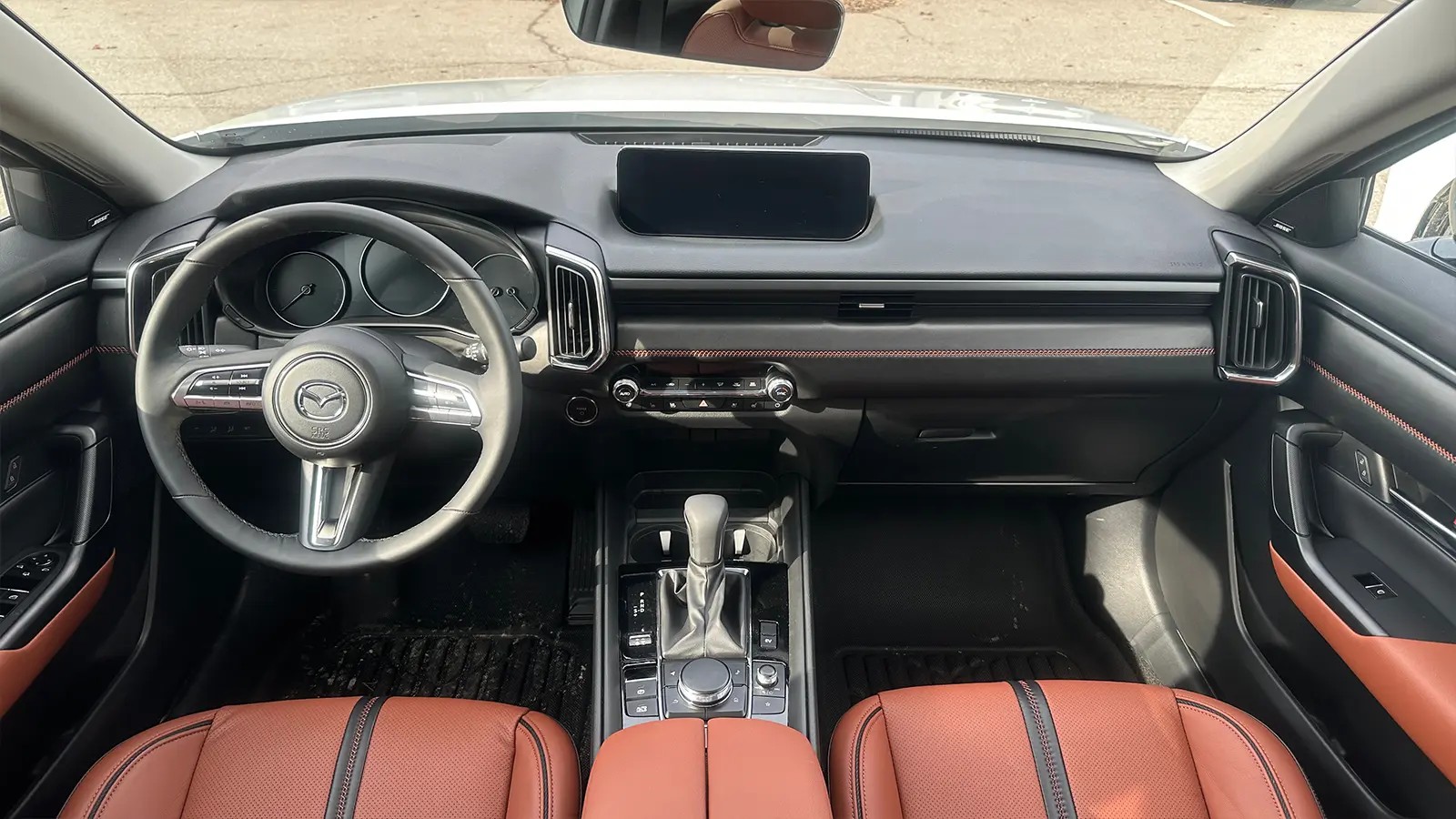 Mazda CX-50 interior front view
Mazda CX-50 interior front view
The CX-50 Hybrid presents a near-luxury experience with a tactile button layout and a more composed ride and quieter cabin than many Toyota hybrids. It embodies a refined, fuel-conscious personality, moving away from Mazda’s traditional emphasis on sporty driving, which is preserved in other CX-50 trims with paddle shifters and turbo engines.
Priced between $34,000 and just over $40,000 MSRP, the CX-50 Hybrid occupies the middle ground in the CX-50 lineup, positioned above gasoline models but below the more performance-oriented Turbo versions. This pricing strategy contrasts with the Hyundai Tucson, which offers a broader spectrum of hybrid options at similar price points, ranging from efficient to sporty.
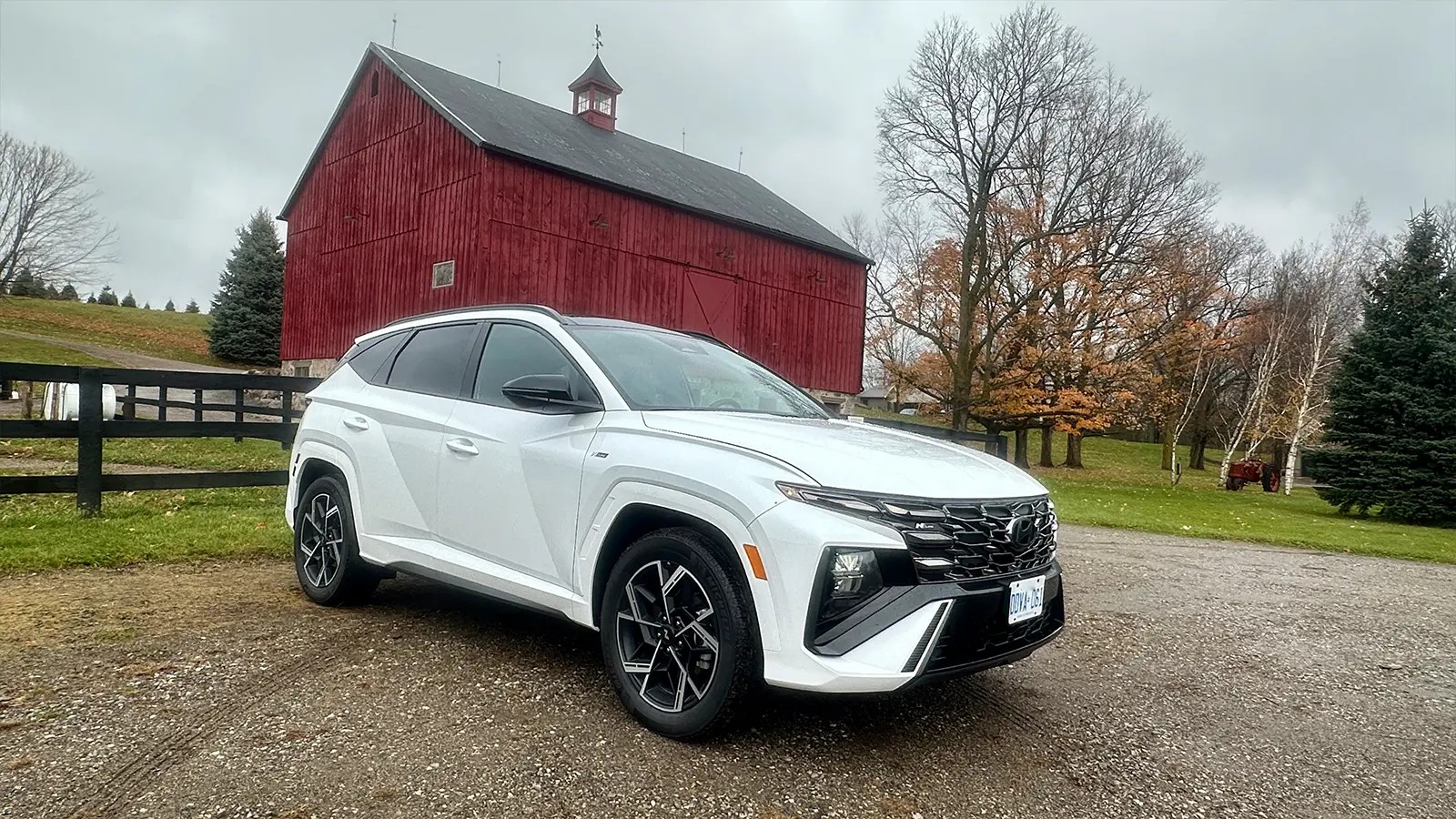 Hyundai Tucson Hybrid in white exterior
Hyundai Tucson Hybrid in white exterior
Hyundai Tucson Hybrid: Versatility with Efficiency and Sportiness
Hyundai takes a more comprehensive approach with its popular Tucson model, offering a diverse range of powertrains including gas-only, sporty and luxurious hybrid trims, and even a plug-in hybrid Tucson. The Tucson PHEV is ideal for those seeking maximum electric driving range for daily commutes with the reassurance of a gasoline engine for longer journeys. It offers a 33-mile all-electric range when regularly charged.
The Tucson Hybrid N Line model tested stands out with its unique 19-inch wheels, black mirror caps, and dual exhaust outlets, in addition to N Line badging. For 2025, all Tucson models receive a refreshed front fascia with updated LED lighting and new wheel designs. The Tucson’s overall design is characterized by sharper lines compared to its more conventionally styled competitors in the small hybrid SUV category.
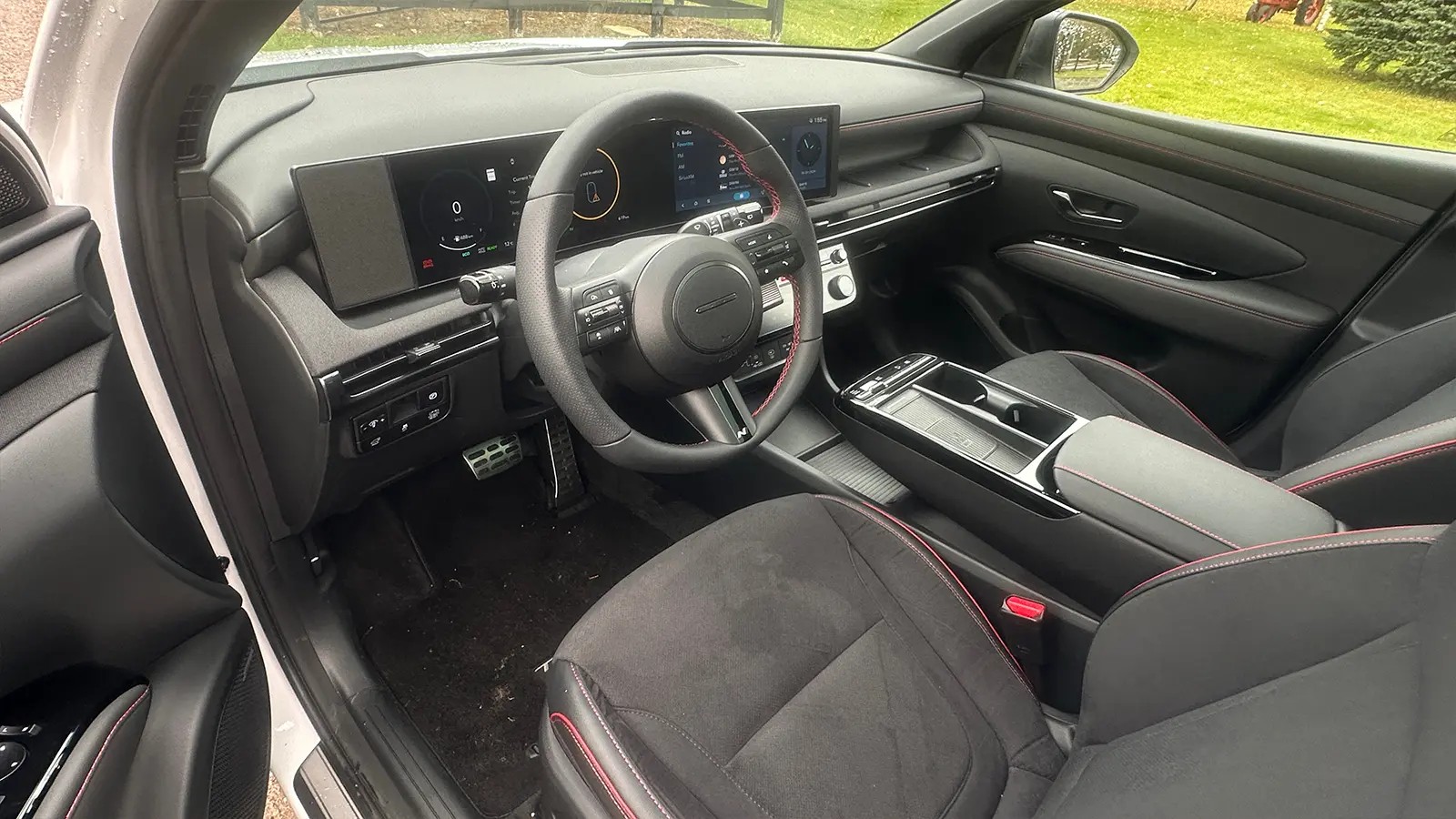 Hyundai Tucson Hybrid interior front view
Hyundai Tucson Hybrid interior front view
Inside, the Tucson Hybrid N Line features a modern, all-digital dual-screen setup, a departure from traditional analog gauges. Red stitching accents adorn the seats, doors, center armrest, and steering wheel, complemented by sporty pedals and an N-branded steering wheel, emphasizing its performance intentions.
This sporty aesthetic is backed by a responsive 1.6-liter turbocharged engine, delivering a combined 231 horsepower and 258 lb-ft of torque on premium fuel, though it is rated to run on regular gasoline. Paddle shifters offer manual control over the six-speed automatic transmission, providing a more engaging driving experience than the CVTs found in the Mazda and Lexus.
While not the most fuel-efficient small hybrid SUV in its class, the Tucson Hybrid N Line achieves a respectable 35 mpg combined. This slight dip in efficiency is compensated by its enhanced performance and driving enjoyment, particularly when accelerating onto highways. The powertrain also exhibits a more refined feel compared to the Mazda and even the Lexus.
Despite its sporty N Line designation, the Tucson Hybrid N Line’s ride quality is surprisingly similar to the 2025 Tucson XRT, a new soft-roading trim in the Hyundai lineup. Interestingly, even with its sporty cues, the Hybrid N Line includes a “Baby Mode,” which softens initial acceleration for passenger comfort, highlighting its family-friendly nature.
The Tucson also excels in practicality, offering more rear-seat legroom and cargo space than the Mazda CX-50 Hybrid, and significantly more space than the smaller Lexus UX. The Hyundai Tucson Hybrid N Line emerges as a well-rounded choice in the small hybrid SUV segment, combining sporty appeal with family-oriented practicality and ample space.
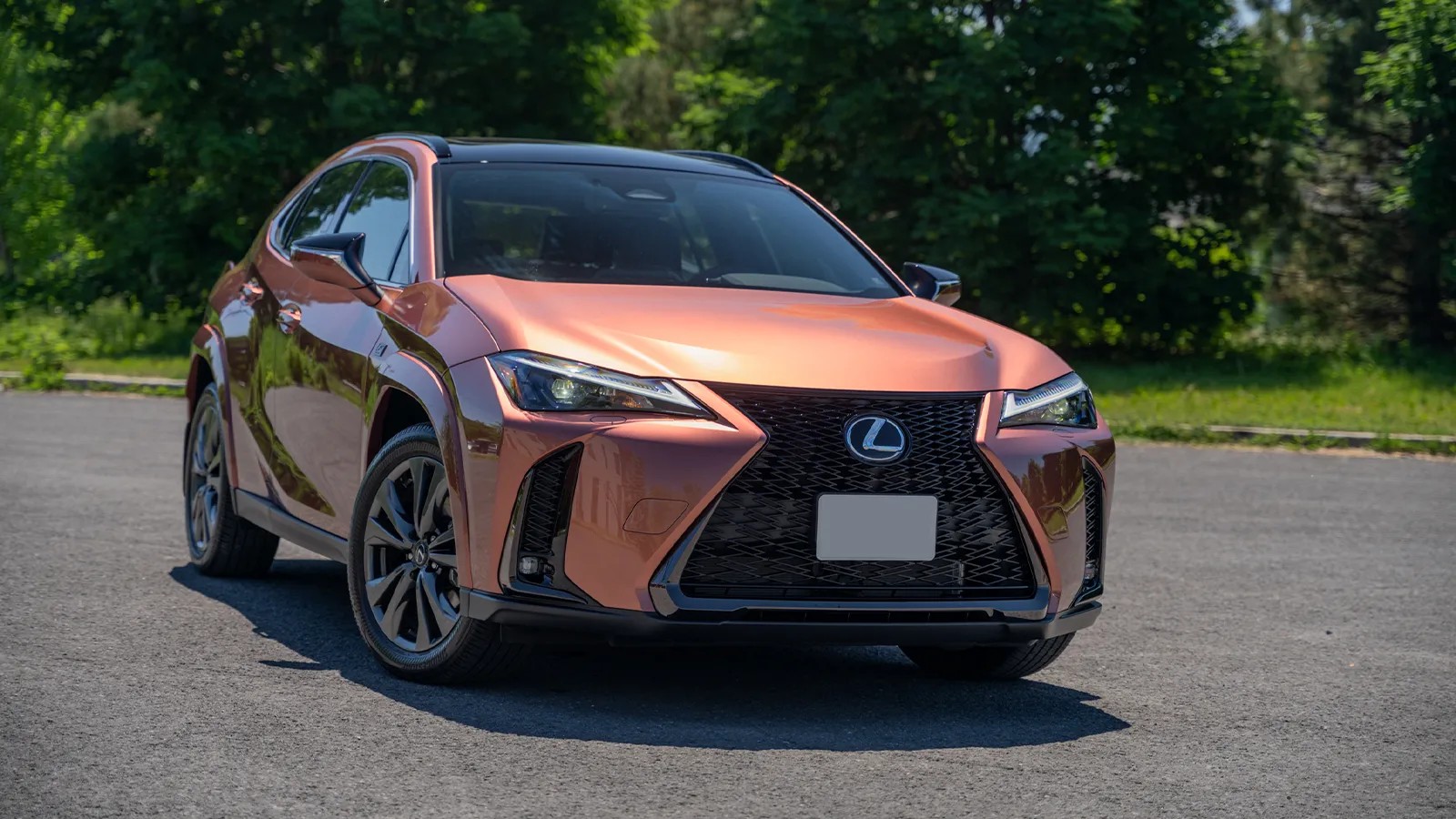 Lexus UX 300h in orange exterior
Lexus UX 300h in orange exterior
Lexus UX 300h: Compact Luxury with a Focus on Urban Agility
The Lexus UX 300h, updated for 2025 (formerly UX 250h), presents a different proposition in the small hybrid SUV category. It feels noticeably smaller and less powerful than its competitors, and surprisingly, less refined in some aspects, despite its luxury branding and similar price point. The 2025 update brings subtle enhancements, and the UX 300h continues to be available in both front-wheel and all-wheel drive configurations.
However, its classification as a CUV or SUV is debatable. Fueleconomy.gov categorizes the UX 300h as a compact car, while the Mazda and Hyundai are classified as Small SUV 4WD. The UX 300h arguably leans more towards a subcompact crossover or hatchback in size than a true compact SUV. While driver space isn’t significantly tighter, its smaller footprint is evident when parked alongside the Tucson and CX-50. Although not direct competitors in size, their overlapping price ranges make them cross-shoppable.
The Lexus UX 300h’s smaller dimensions can be an advantage in congested urban environments, offering enhanced parking maneuverability. Its styling is arguably attractive, particularly in the higher-trim F Sport models like the tester vehicle, which adds unique wheels, grille, a black roof, and dark roof rails for a sportier visual appeal. However, the oversized Lexus grille on a relatively small body might not appeal to all tastes.
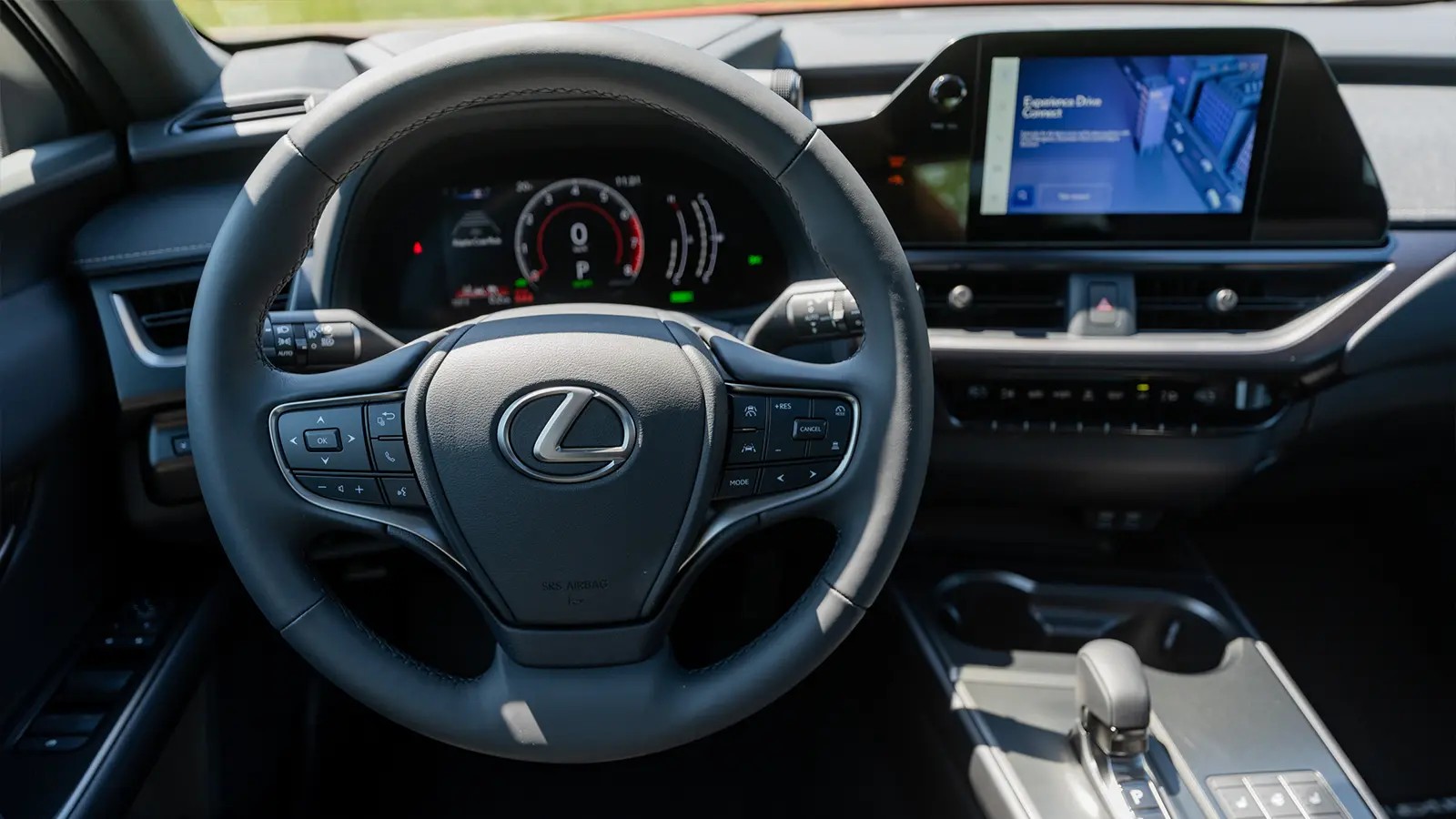 Lexus UX 300h interior front view
Lexus UX 300h interior front view
The UX 300h’s interior excels in material quality, design, driver comfort, and infotainment, especially for drivers under six feet tall. Front-seat spaciousness is comparable to its rivals. However, rear passenger and cargo space are compromised by its smaller size. The cargo area offers a mere 17.2 cubic feet, less than half the capacity of the Tucson.
The UX 300h’s gauges feel somewhat dated in a digital-centric era, though it does offer a color head-up display, a feature not found in the Mazda or Hyundai in this comparison. A larger 12.3-inch infotainment screen is now standard on all but the base model, modernizing the interior to some extent. However, the abundance of physical buttons throughout the cabin reflects a design philosophy from a less digitally integrated era, which might be appealing to those who prefer tactile controls.
Significant powertrain updates include a shift-by-wire CVT system in this fifth-generation hybrid system. The UX 300h is also the first Lexus to adopt a lithium-ion traction battery, unlike the nickel-metal hydride batteries used in the Mazda and most Toyota hybrids.
Power is increased to 196 horsepower, and the all-wheel-drive model achieves 42 mpg combined, closely matching the front-wheel-drive version’s 43 mpg. However, the engine noise remains a notable drawback. It is described as loud and unrefined for a Lexus, a characteristic that might be more noticeable now that the larger battery allows for extended periods of quieter electric driving.
The Lexus UX 300h’s primary strength lies in its price. With a starting MSRP of $37,515 for the front-wheel-drive model and $43,035 for the F Sport AWD version (before destination charges and taxes), it offers a relatively affordable entry point into the luxury hybrid SUV market. The upscale interior materials and design come at the cost of reduced interior space.
Conclusion: Choosing the Right Small Hybrid SUV
Each of these small hybrid crossovers presents a unique set of strengths and weaknesses. However, the Hyundai Tucson Hybrid stands out as a compelling all-rounder. It effectively balances practicality and sporty appeal, wrapped in a modern and stylish design that is likely to remain fresh for years to come. Its versatility and comprehensive feature set position it as a strong contender for those seeking a well-rounded small hybrid SUV that won’t feel outdated as electric vehicles become increasingly prevalent.
*All mileage figures are EPA estimates.
